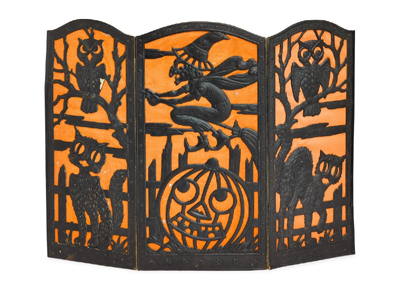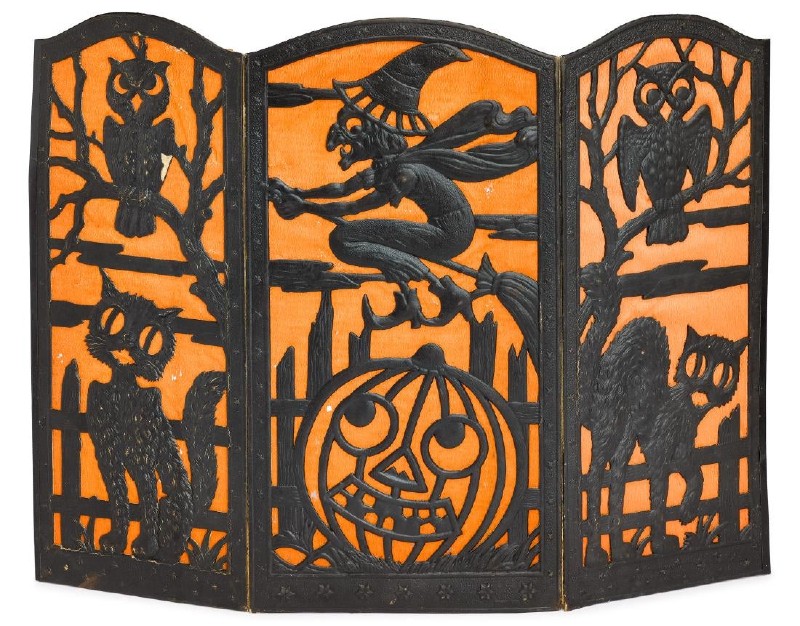
NEW YORK – Halloween had its origins with the ancient Celtic festival of Samhain, when people would carry torches and don costumes to hide from evil spirits and ghosts. Over the centuries, it has morphed into a big party and the scares are all in good fun. In America today, Halloween is big business and in terms of consumer spending, second only to Christmas. Vintage and antique Halloween decorations never seem to lose their appeal.
Buyers need to beware, however, as many fakes and fantasy items have been produced since the mid-1990s and are sometimes misrepresented as being decades older. Investigate pieces carefully online or with reference books and talk to experts before buying. And it’s been said before but collect what you like – not what you think will increase in value – as holiday market segments run hot and cold in waves. Small paper items, for example, used to be frequently overlooked by buyers but now bring big prices as larger items become harder to find.
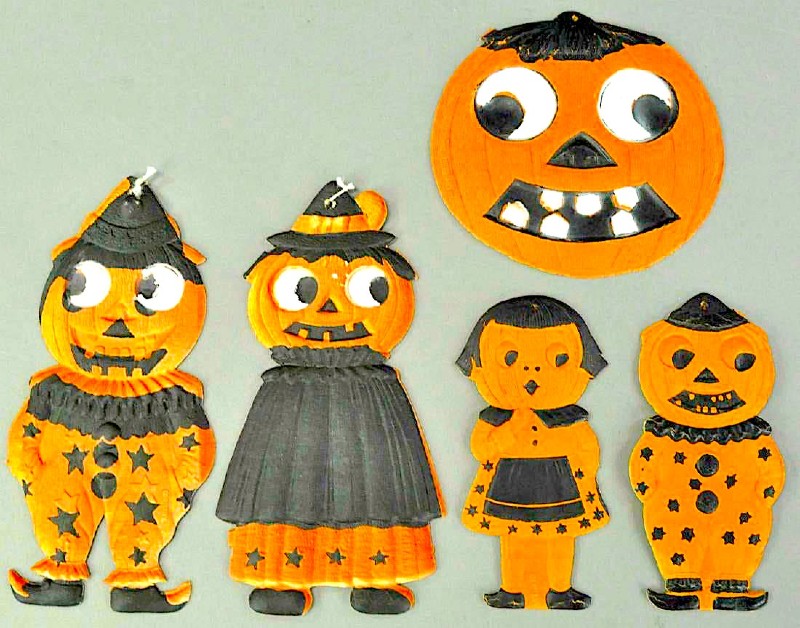
Authentic figural candy containers such as the pumpkin and “veggie people” remain at the upper echelon of Halloween collectibles with rare and unusual examples often bringing several thousand dollars each. Buyers just getting started with Halloween collectibles would do well to begin with die-cut decorations of which there are many choices to suit all tastes.
The cream of the crop for older die-cuts were those made in Germany. Noel Barrett of Noel Barrett Antiques & Auctions Ltd. in Pipersville, Pa., said many really good German Halloween items were made in the 1920s and into the early ’30s “when Germany was really struggling for export materials after the war and trying to rebuild their industry.” Germany did not fare well in the Treaty of Versailles and had a crushing debt. Interestingly, American businessmen like Frank W. Woolworth, the founder of the Woolworth’s chain of discount stores, encouraged Germany to get into the holiday market for American export.
“It was relatively inexpensive to produce and there was a ready market for it,” Barrett said. “Halloween was of interest in Germany but it was a really big thing here in America, so there was just a good American export market.”
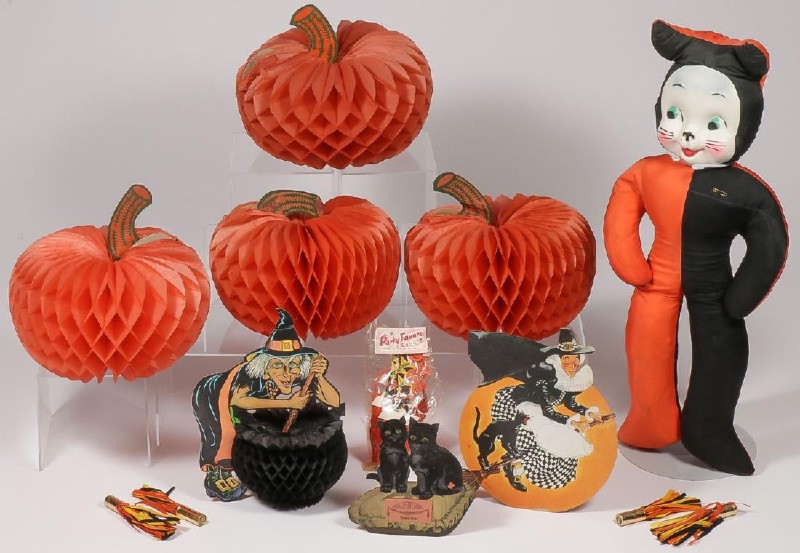
Often made in small shops, these German items exhibited a high degree of craftsmanship and the die-cuts were usually embossed. Typically made of cardboard and often having tissue or crepe paper elements, they were not designed to be long-lasting. Playing with them as they were intended or hanging them up could greatly reduce their lifespan. Barrett said buyers should look for novelty and unusual variations in any category of Halloween collectibles. The more unusual the piece, the higher the price it will fetch. Owing to condition, old store stock or items boxed up and never used are like gold to collectors.
A German die-cut Halloween fire screen, decorated with a witch, a jack-o’-lantern, black cats and owls and folds into three sections, sold for $1,100 + the buyer’s premium in June 2019 at Pook & Pook Inc. with Noel Barrett. Asked what made this screen so desirable, Barrett said, “Number one, it’s a high-quality German-made embossed cardboard work and it is designed basically to go in front of a fireplace so it could very easily have a short lifespan. It’s big and rare and you could put it out even if you don’t have a fireplace.” This item was apparently set aside and since it was never used, its condition was great.
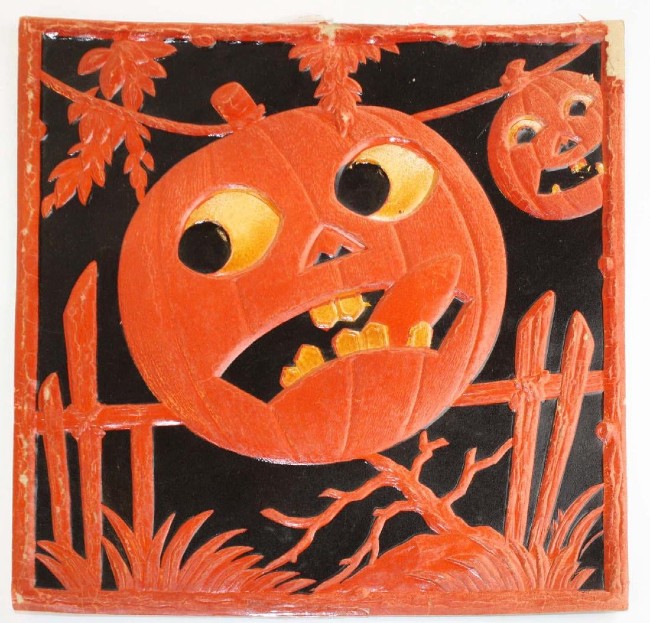
While German die-cut decorations are well known for their artistry, several American companies took their share of the Halloween market in the early 20th Century, including the Beistle Co. of Shippensburg, Pa., the Dennison Manufacturing Co. of Framingham, Mass., and even greeting card giant Hallmark. Their decorations are quite desirable to collectors also. Designed to be throwaway items, however, these cardboard decorations were rarely marked by their manufacturer, but once you get to know the images and decorating style of a particular company, it can be easier to attribute pieces.
As far as the desirability of subject matter, the traditional jack-o’-lantern is always popular but so too are devils, witches, cats and skeletons. Witches and jack-o’-lantern tend to be fairly ubiquitous so look for unusual examples such as an alien-form pumpkin, a pirate skull or a witch playing the violin.
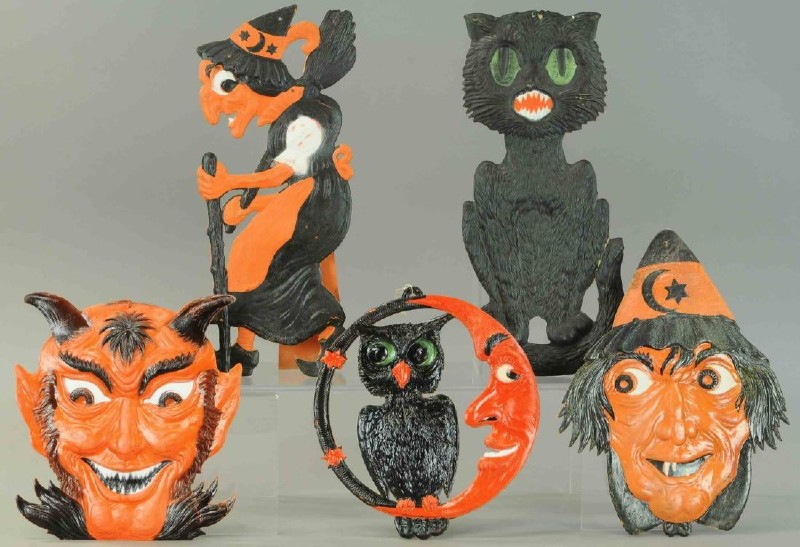
“There are an array of jack-o-lanterns. You can have pumpkin jack-o’-lanterns and then you can have witch head jack-o’-lanterns. When you get into more obscure ones, a lot of people just collect those,” Barrett said.
Both buyers and sellers need to know their stuff and its value. A recently-seen listing on eBay for four die-cut decorations and paper masks (two black cats, a crow and a bat inside a moon), circa 1920s, sold for an insane bargain price of $30, but one of the items included was a rare crow that on its own probably could have brought over $100.
# # #


